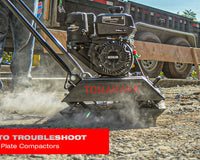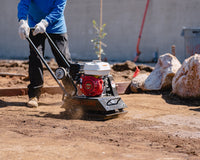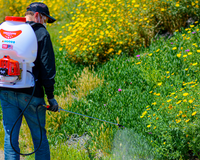Concrete mites, also known as concrete mite mites, are tiny arachnids that are sometimes found in damp or humid environments, including concrete structures. While their presence may raise concerns, it is important to understand whether concrete mites pose any significant harm to humans. In this blog post, we will explore the nature of concrete mites, their behavior, and the potential risks they may or may not pose to human health.
What are Concrete Mites?
Concrete mites belong to the family Acaridae and are commonly found in environments with high moisture levels, such as basements, crawl spaces, and areas affected by water leaks or flooding. These mites are extremely small, measuring about 0.3 to 0.5 millimeters in length, making them barely visible to the naked eye.
Mite Behavior and Habitat
Concrete mites feed on a variety of organic matter, including mold, fungi, dead insects, and decaying materials. Their preferred habitats include damp concrete, wood, and insulation, where they can find suitable food sources. It is important to note that concrete mites are not exclusive to concrete structures and can also be found in other moist environments.
Potential Health Risks from Mites
Concrete mites are generally not known to bite humans or transmit diseases. They are not parasitic and do not infest human bodies. While they may cause some irritation if they come into contact with the skin, it is uncommon and typically mild. Allergic reactions to concrete mite waste or shed skin particles are also rare but can occur in individuals who are sensitive to mites or have pre-existing allergies.
Mite Prevention and Control
To minimize the presence of concrete mites and reduce potential risks, it is important to address moisture issues and maintain proper ventilation in areas prone to dampness. Regularly inspecting and repairing any leaks or sources of water intrusion can help prevent the conditions that favor concrete mite infestations.
Proper cleaning and maintenance practices, such as regular vacuuming and dusting, can also help remove potential food sources and reduce the likelihood of mite populations establishing themselves.
Seeking Professional Advice
If you suspect a concrete mite infestation or have concerns about mites in your concrete structure, it is advisable to seek professional pest control services. Pest control experts can assess the situation, identify the type of mites present, and provide appropriate treatment options, if necessary.
While the presence of concrete mites may cause some concern, they are generally not harmful to humans. Concrete mites do not bite, infest the human body, or transmit diseases. However, individuals with specific allergies or sensitivities may experience mild irritation or allergic reactions. By addressing moisture issues and maintaining proper hygiene and cleanliness, the risks associated with concrete mites can be minimized. If you have concerns about mites in your concrete structure, it is best to consult with a professional pest control service to assess the situation and provide appropriate recommendations.
Glossary
Concrete Mites - Tiny arachnids found in damp environments, known for their presence in concrete structures due to moisture.Acaridae - The family to which concrete mites belong, characterizing a group of mites that thrive in moist conditions.
Organic Matter - Material derived from living organisms; concrete mites feed on mold, fungi, and decay, which are forms of organic matter.
Dermatitis - A skin condition that may occur from contact with concrete mites, characterized by inflammation and irritation, although very rare.
Allergic Reactions - Uncommon but possible reactions to concrete mites, likely due to sensitivity to the mites' waste or shed skin.
Predaceous - Describes an organism that preys on other animals; concrete mites sometimes feed on other small insects or mites.
Pollen-Feeders - Refers to mites that consume pollen; some concrete mites start their season feeding on pollen before switching to a carnivorous diet.
Nuisance Pest - While generally not harmful, concrete mites can be bothersome, especially when they leave stains or come into direct contact with humans.
Pyrethroid Insecticide - A type of chemical used to control pests, including concrete mites, effective in managing their population in affected areas.
Parthenogenesis - A reproductive process where females produce offspring without male fertilization, noted in some related mite species but not directly mentioned for concrete mites in the blog.










